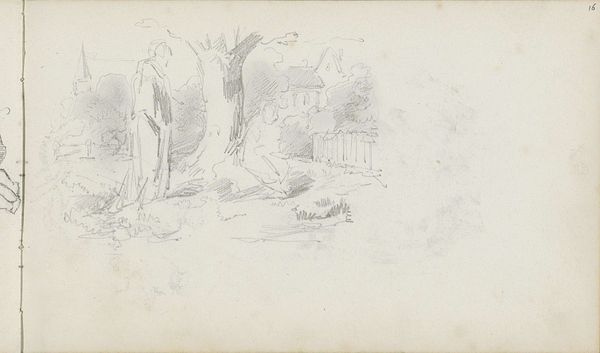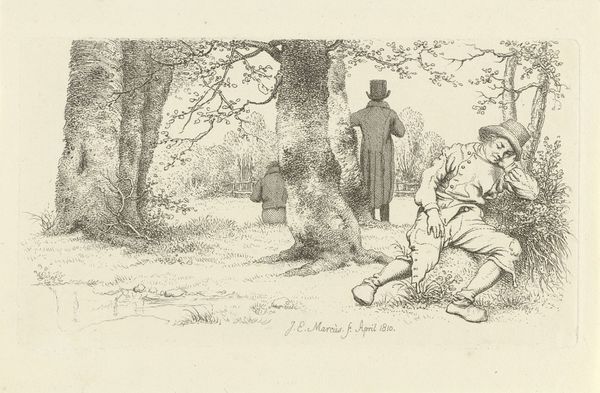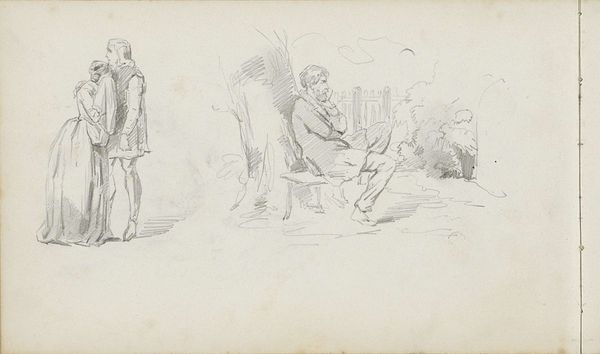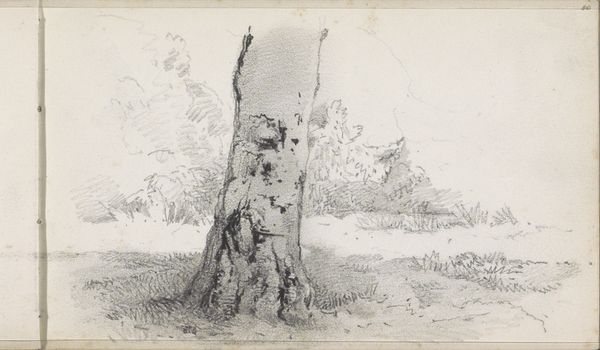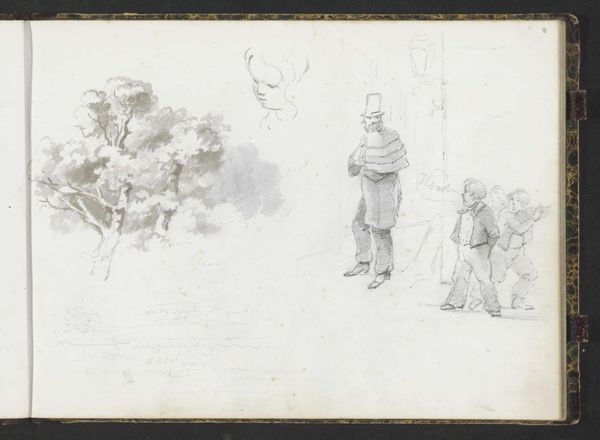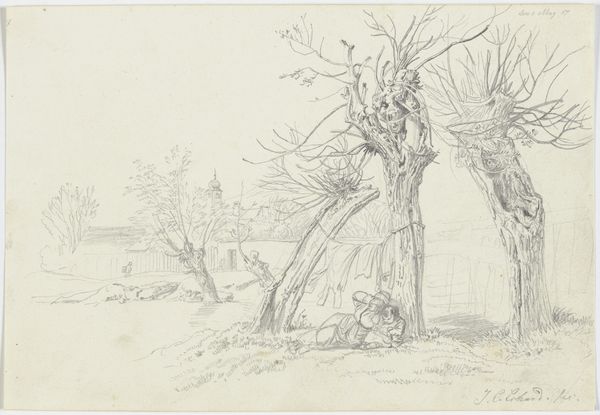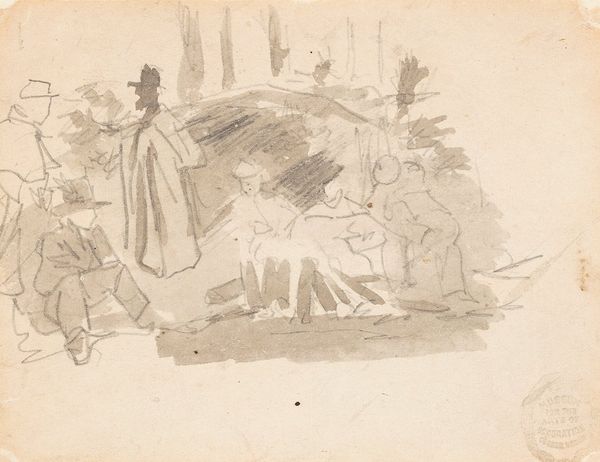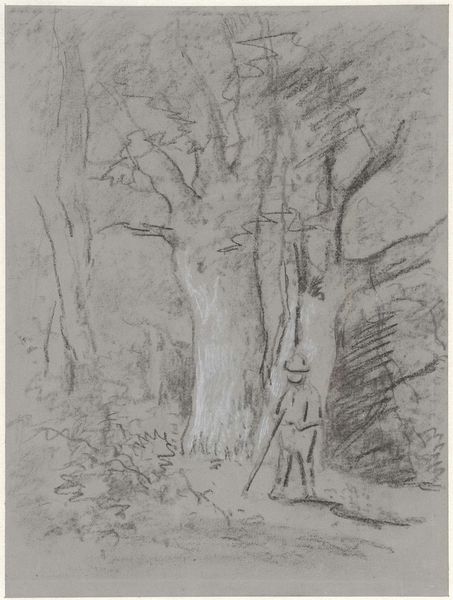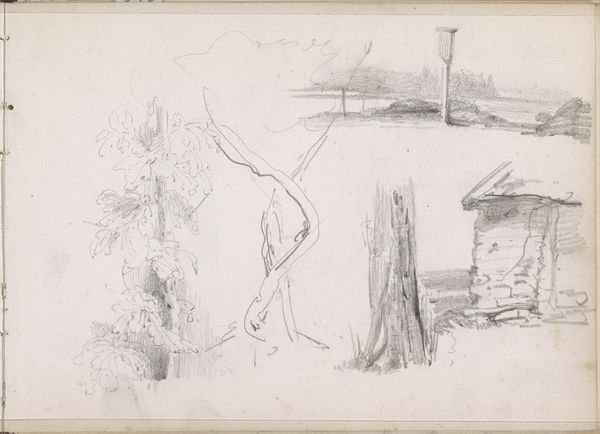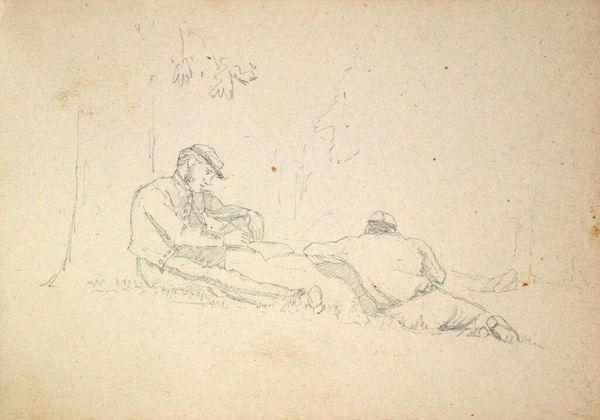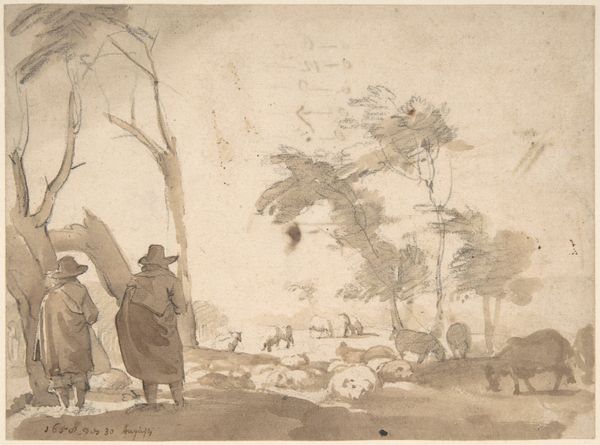
Wandelaar met stok en een zittende figuur op een pad c. 1840 - 1860
0:00
0:00
charlesrochussen
Rijksmuseum
drawing, paper, ink, pencil
#
drawing
#
pencil sketch
#
landscape
#
figuration
#
paper
#
ink
#
romanticism
#
pencil
Copyright: Rijks Museum: Open Domain
Editor: So, this drawing by Charles Rochussen, titled "Wandelaar met stok en een zittende figuur op een pad", dates to between 1840 and 1860. It's rendered in ink and pencil on paper, currently held at the Rijksmuseum. I find the contrast between the active wanderer and the seated figure intriguing, almost like two sides of contemplation. What symbols or narratives do you see at play here? Curator: This piece evokes a feeling that is very archetypal: The solitary wanderer, a recurring image in Romanticism. The staff, however, carries a strong association with pilgrimage. Consider its symbolic meaning: spiritual journey, guidance, and support. What about the seated figure in comparison, seemingly still while also at the threshold of a dark wood? What does the relationship suggest to you? Editor: Hmm, a sort of before and after perhaps? Or maybe the wanderer's past versus his future destination? It's like he's carrying on while someone's left behind with all that foliage—those inner demons maybe? Curator: That friction and tension in Romanticism, where nature is beautiful yet menacing, and internal psychological states are reflected, is what Rochussen evokes. I find myself returning to that staff… its deliberate and constant presence really anchors that emotional journey of the figure, the journey through all these landscapes that are actually also in your mind. Editor: It's interesting to think about how simple objects become weighted with so much history and feeling. Curator: Exactly. These potent, recurring symbols shape not just the piece's immediate effect, but the way it resonates with viewers even today. The past echoing into our present. Editor: It makes you wonder what future generations will read in these images. Thanks.
Comments
No comments
Be the first to comment and join the conversation on the ultimate creative platform.
